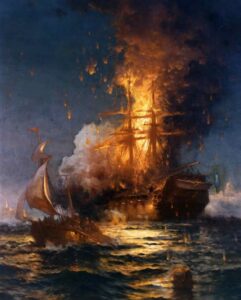Hollywood is beset on all sides. Fewer folks are leaving the house to watch a movie, even though the prices has moved much slower than inflation. TikTok, Reels and YouTube are the real competitors. Many young people have never experienced a theater showing that wasn’t animated or a Marvel blockbuster.
The Shift
As if declining theater attendance wasn’t enough, the way movies are made is also changing. AI technology for video creation is advancing rapidly. Despite contractual safeguards against misuse, animation and effects artists face an uncertain future.
The world of video creation is undergoing a revolution with the rise of AI tools. The reality is, that the days of needing expensive equipment and editing software are almost gone. Now, with just a few words, anyone can generate stunning visuals using text-to-video or image-to-video tools. While OpenAI’s text-to-video offering, Sora, isn’t publicly available, others are and they are making significant strides.
Two of the leading players in this space are Luma AI and RunwayML. Let’s dive into what they are and how they work.
Luma AI: Dream Machine
Luma Labs’ Dream Machine is a groundbreaking tool that allows users to create videos from simple text prompts. Led by former Apple and tech giant employees, Dream Machine can translate a scene described in words into a realistic video. Imagine describing a field of flowers swaying under a vibrant sunset, and Dream Machine brings it to life. It’s free to try, but this may not last forever.
RunwayML
RunwayML offers a different approach, providing a vast library of pre-trained AI models for various tasks, including text-to-video. Although Luma currently outperforms Runway’s Gen-2 product, Gen-3 is imminent and shows promise. RunwayML’s library allows for a wide range of creative exploration, though it comes with a steeper learning curve. But start putting multiple resources together you can create an actor in one scene and then use their lip sync to give them dialogue.
How They Work
Imagine you have a magic paintbrush. They let you tell the brush what to paint, and it creates a whole new picture based on your description. Little kids will be able to make their own short films in the not-too-distant future. These tools are only limited by an adult’s imagination, whereas kids have no limits to their imagination. DOn’t know what to write. Ask ChatGPT to write a prompt. Just describe the scene and camera movement if you’d like.
Comparative Analysis: Luma AI vs. RunwayML
I had both Luma and Runway animate this photo by Edward Moran using the Prompt: Camera is stationary while filming the Burning of the Frigate Philadelphia in the Harbor of Tripoli. Intense flames and calm water.

LUMA AI’s Version Above
Luma (Above)
Prompt: Camera is stationary while filming the Burning of the Frigate Philadelphia in the Harbor of Tripoli. Intense flames and calm water.
- Luma AI’s Version: Chaotic but vibrant.
- RunwayML’s Gen 2 Offering: Smoother water and overall image quality.
Winner: Runway
RUNWAY (Above)
LUMA (Above)
Prompt: A field of flowers swaying in the breeze under a vibrant sunset.
- Runway: Detailed and vivid.
- Luma: Realistic but less detailed.
Winner: Runway
Runway (Above)
Luma (Above)
Prompt: Create a video of a drone flying through an abandoned mall during mid-morning or late afternoon to capture optimal sunlight angles. The scene should be eerie and haunting, with decayed storefronts, broken glass, and scattered debris. The drone should smoothly glide down the main hallway, showcasing wide shots.
- Runway: Misinterpreted the prompt.
- Luma: Accurate and eerie.
Winner: Luma
Runway (Above)
LUMA (Above)
Prompt: Dragon-toucan walking through the Serengeti.
- Runway: Realistic but static.
- Luma: Creative interpretation.
Winner: Runway
Runway (Above)
Luma (Above)
Prompt: 1970s Cinematic Feel. Grimy Street in London. Taxi cab driver stands in front of his car waiting for his passenger. He is an older man with a weather-beaten face.
- Runway: Accurate car but inconsistent details.
- Luma: Cinematic feel with better character consistency.
Winner: Luma
Here are some additional factors to consider:
- Learning Curve: Luma AI is easier to use for beginners, while RunwayML offers more advanced features.
- Style: Luma AI focuses on realistic visuals, while RunwayML allows for a more creative exploration of different artistic styles. However, Runway has improved its details and with a new update on the way, you’ll be seeing these videos replacing commercials shortly.
- Cost: Both platforms offer free trials and tiered pricing plans.
Other Text-to-Video and Image-to-Video Companies to Explore:
- DALL-E 2 (OpenAI): [OpenAI DALL-E 2] Primarily an image generation tool, DALL-E 2 can also be used to create video sequences.
- Imagen Video (Google AI): [Imagen Video] Similar to DALL-E 2 Imagen Video focuses on generating short video clips from text descriptions. It’s crazy to think that Google’s offering is so inferior.
Hollywood must adapt to survive. AI tools like Luma AI and RunwayML are democratizing video creation, making it accessible to anyone with a vivid imagination. Just like social media gave everyone the venue to express themselves. As these technologies evolve, they will reshape the entertainment landscape and shrink Hollywood.

Christopher lives in Vermont with his wife, twin boys, border collie and corgi. He has owned a film production company, sold slot machines, and worked for Tony Robbins. He writes in his magical tiny house and sometimes writes in his blog at chrisrodgers.blog
Visit his author’s page.
One Comment Add yours